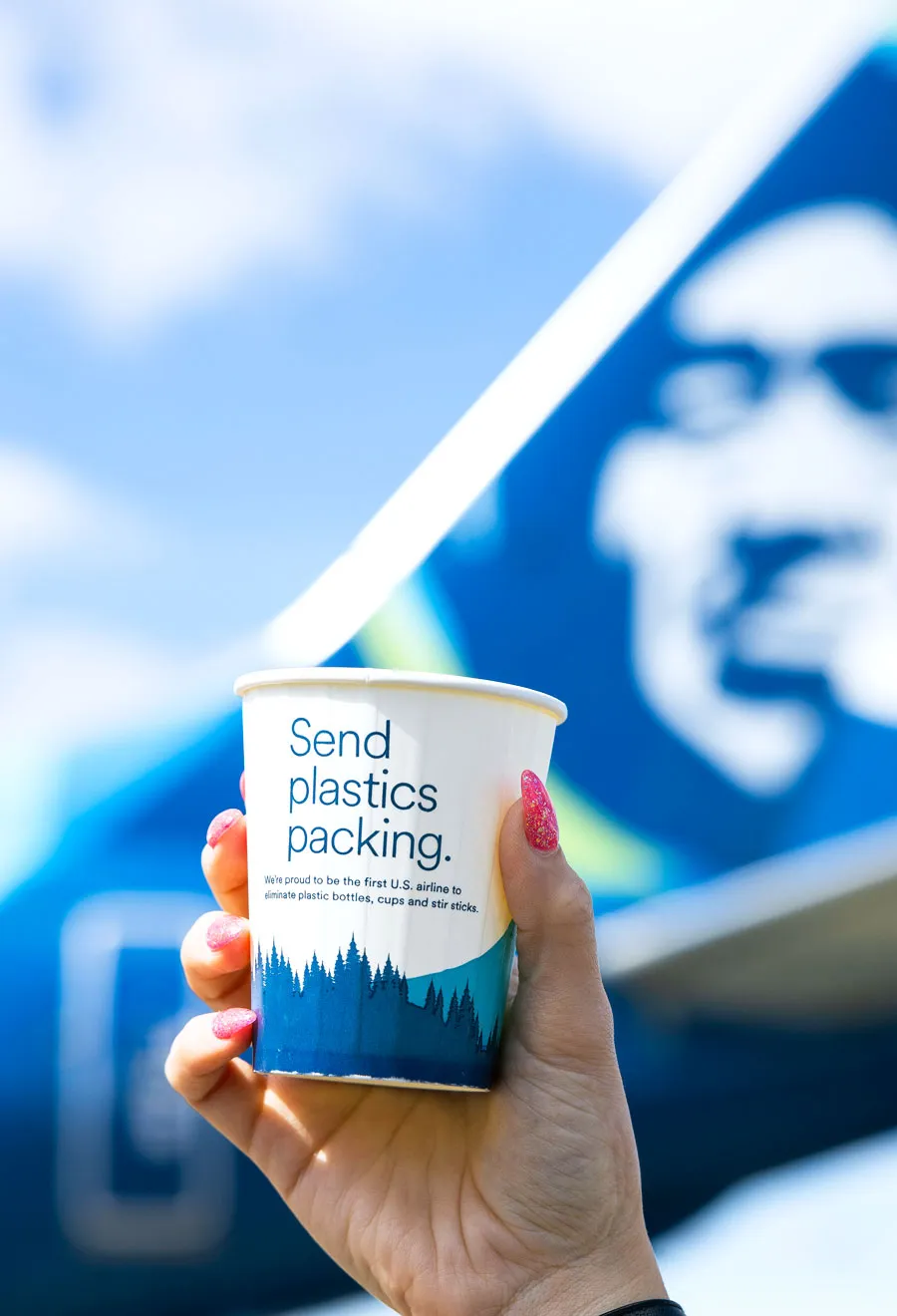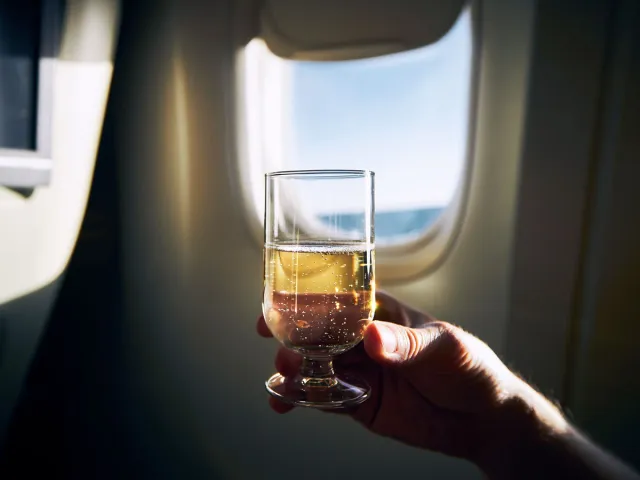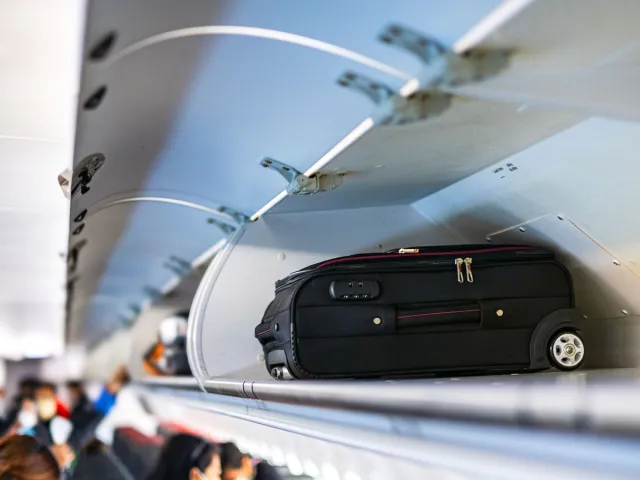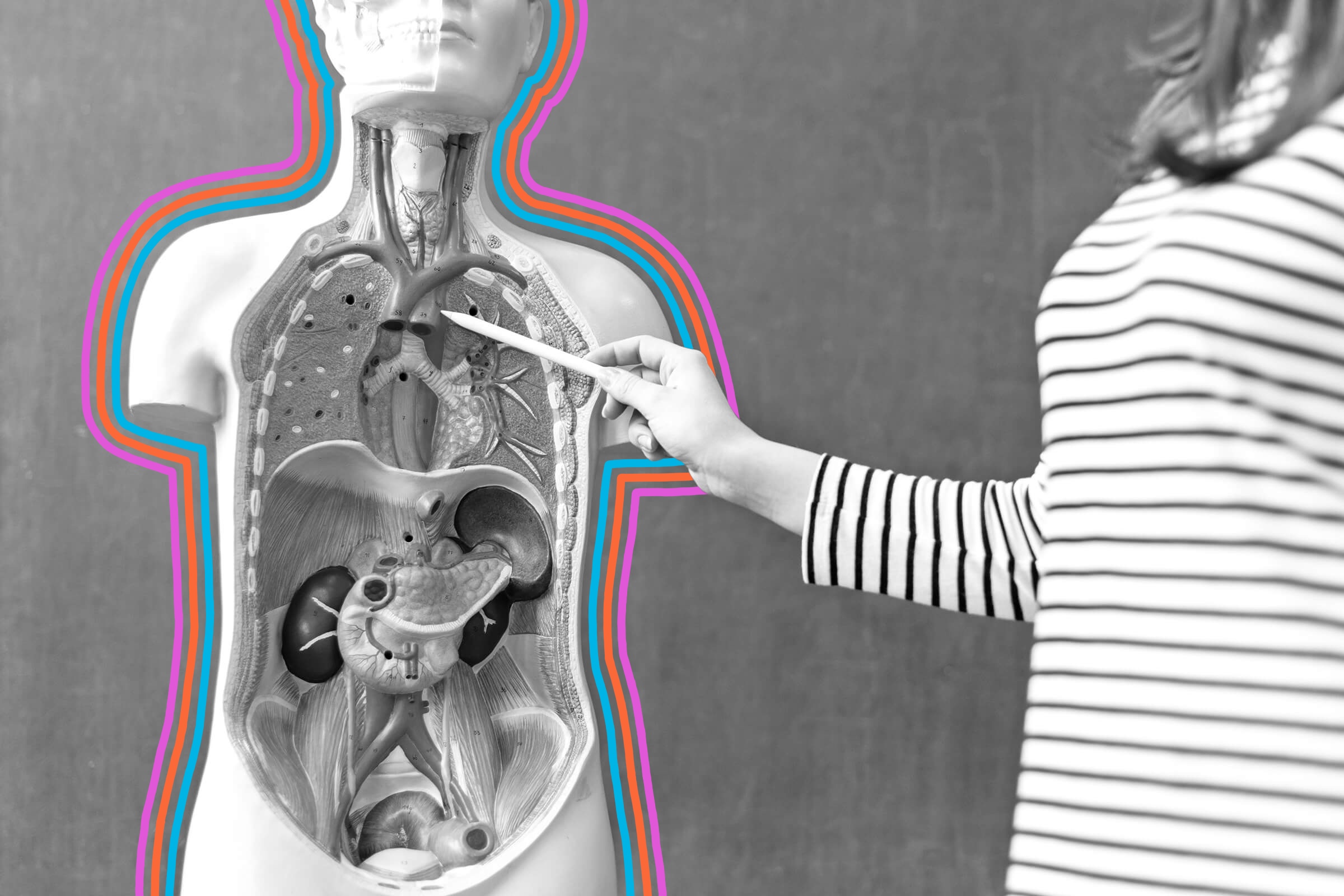We all have our go-to in-flight beverage, whether it’s coffee, ginger ale, or tomato juice. (There’s a scientific reason for that last one). But have you ever paused to consider just how many drinks are consumed on a single flight — and how many disposable cups are used on planes around the world each year? According to statistics from the International Air Transport Association (IATA), in 2018 the airline industry was responsible for 6.1 million tons of plastic waste, accounting for about 2% of global plastic waste. Fortunately, several airlines are taking steps to reduce waste onboard — it’s one small way you can help make your next trip a little friendlier for the planet.
Which U.S. Airlines Are Eliminating Plastic Cups?
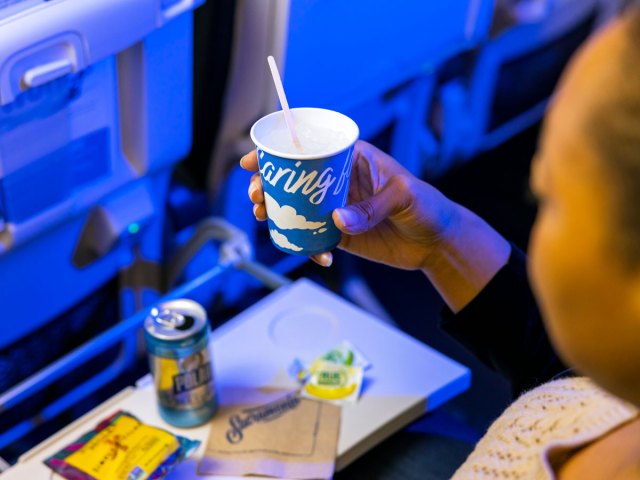
In 2023, Seattle-based Alaska Airlines became the first U.S. carrier to switch to paper cups for on-board beverage service. In a press release, the airline announced that the move would eliminate “more than 55 million plastic cups annually and replaces them with a more planet-friendly alternative.” The airline says switching from plastic to paper — including serving Boxed Water instead of water in plastic bottles — prevents 2.2 million pounds of plastic waste from ending up in landfills every year, the equivalent weight of 24 Boeing 737s.
In 2024, Delta Air Lines swapped to new recyclable and compostable paper cups for all international flights, followed by domestic flights in the first half of 2025. In total, the airline — one of the world’s largest — said that the switch eliminated nearly 7 million pounds of single-use plastic. Delta also replaced the plastic packaging with paper wrapping on nearly 60 million complimentary earbuds handed out for in-flight entertainment.
Southwest Airlines also joined the no-plastics party in 2024, replacing the plastic cups it previously used to serve cold beverages with new cups made from a blend of bamboo and paper, along with a drink stirrer made from birch wood. The airline said it “expects these changes to reduce its in-flight single-use plastics by more than 1.5 million pounds annually” and “aims to eliminate single-use plastics from in-flight service by 2030.”
While you can expect other airlines to adopt similar policies in the near future, there’s a reason that some are still sticking with plastic, at least for the time being. According to Delta’s press release, the airline’s new cups required an extensive testing, research, and design process. The cups needed to be durable enough to hold both hot and cold beverages and easily stackable for flight attendants to fit in existing beverage carts.
According to Delta, “One of the most important considerations in the transition to paper cups is that many versions include a plastic-based liner that can make them harder to recycle. This is made even more challenging with international regulations and mandates regarding single-use plastic varying significantly, resulting in a patchwork of rules Delta has to consider as a global airline.”
Other Aviation Sustainability Efforts
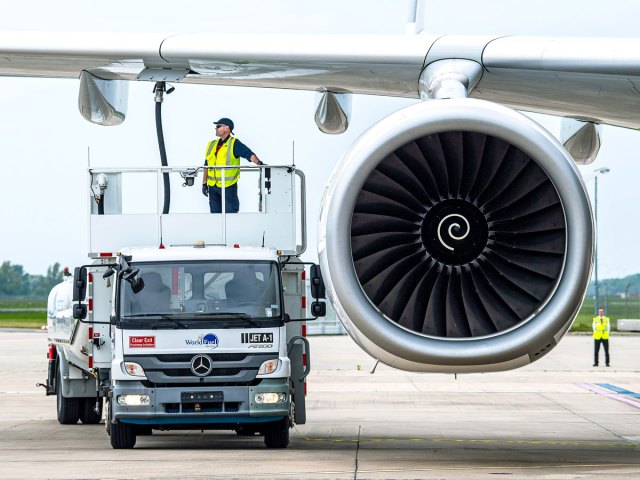
Reducing single-use plastics isn’t the only way airlines are looking ahead toward a greener future. Carriers are replacing many older jets with newer models that can be up to 20% more fuel-efficient, and some also see electric planes as the future for sustainable, short-haul air travel.
While electric planes are still in development, in the meantime many airlines are investing in Sustainable Aviation Fuel (SAF). According to Sustainability Magazine, this type of fuel “has a significantly lower carbon footprint compared to traditional jet fuel, and airlines can use it and invest in its development to reduce carbon emissions.”
In the U.S., United Airlines is leading the way when it comes to SAF. In 2009, it was the first U.S. airline to test SAF and the first to introduce it on regularly scheduled flights in 2016. The SAF program is a big part of United’s ambitious goal to reduce carbon emissions by 100% by 2050. United is also the launch customer for the eVTOL, an electric aircraft that takes off and lands vertically, which could be used for commuter flights.
Across the pond, Lufthansa is another pioneer when it comes to aviation sustainability. Not only does the airline plan to completely eliminate single-use plastic on board by the end of 2025, but it has also launched a first-of-its-kind “green fare.” When a customer chooses one of these fares, part of the fare goes toward reducing CO2 emissions by using SAFs on Lufthansa planes and by contributing to climate protection projects around the globe.
How To Reduce Your Waste on a Plane

Of course, even with the reduction in single-use plastics, there’s still a lot of waste on a plane. If you’re curious about how you can do your part to reduce that waste, here are a few simple suggestions:
- Bring your own reusable water bottle or travel coffee mug and fill it up at the airport before you board your flight (but after you go through security). Once on board, you can ask flight attendants for refills.
- Bring your own snacks and supplies: Instead of eating packaged snacks served on board, you can pack your own food in reusable containers. Similarly, instead of the disposable earbuds wrapped in plastic, remember to bring your own pair. (Plus, the sound quality will be better!)
- Opt for reusable travel-size toiletry bottles — it’s easy to find TSA-approved bottles, so you know you’ll always be complying with liquid rules.
- Consider the aircraft: When you search for flights on Google Flights, a helpful feature notes the estimated CO2 emissions of each aircraft, highlighting newer models you can choose that are more fuel-efficient.
Feature image credit: Image courtesy of Alaska Airlines
More from our network
Daily Passport is part of Inbox Studio, which publishes content that uplifts, informs, and inspires.






